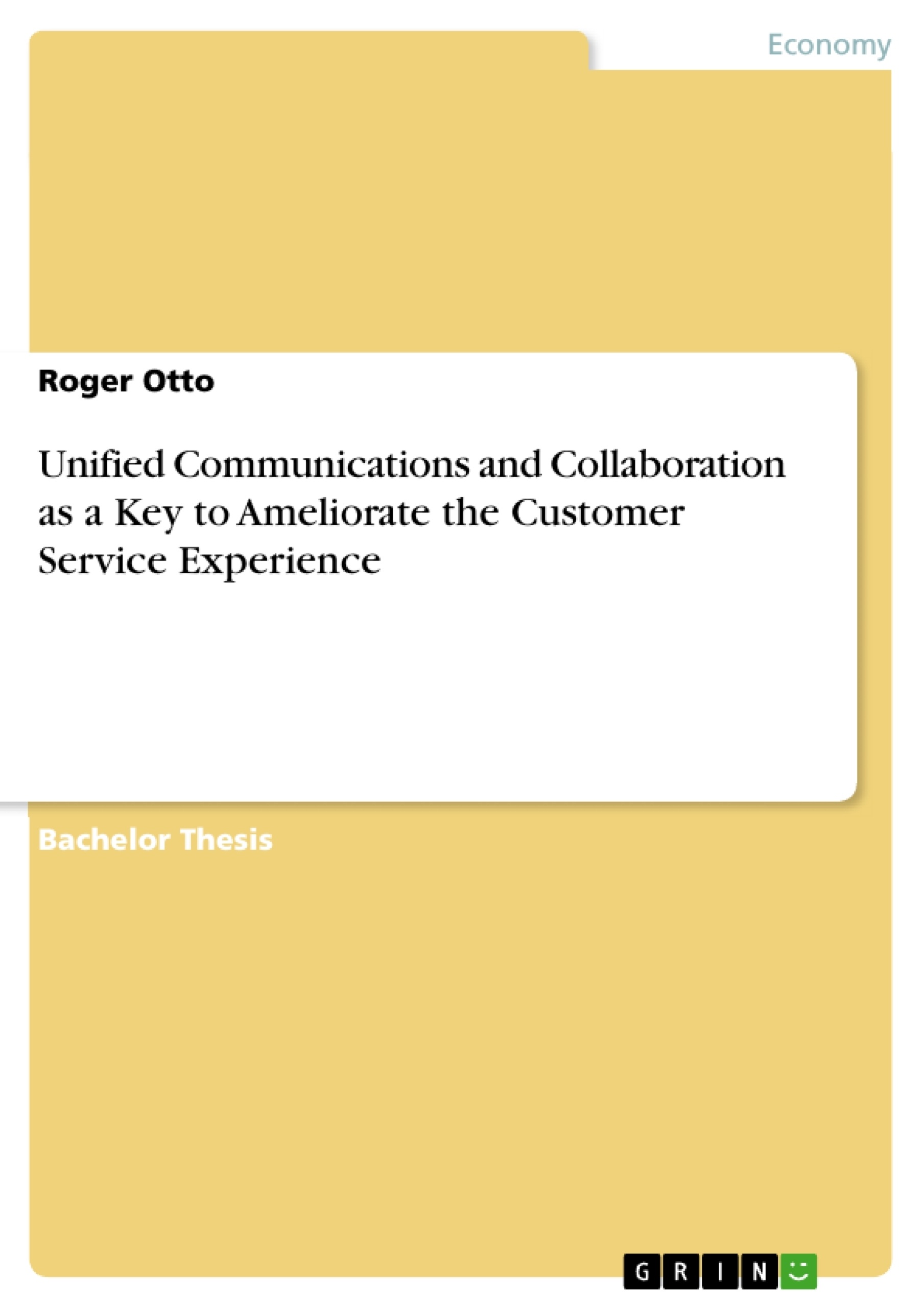During the last two decades the way people and companies communicate have significantly changed. Some of the existing communication channels are adapted to new layers. Other communication channels such as Electronic-Mail (E-Mail), Web Chat, or Social Media are new and additional. At the same time our communication behavior changed through the today´s broad range of diverse communication channels. The so called generation of “Digital Natives” read blocks rather than newspapers, they often meet each other online before the meet in person and they are more likely to send an Instant Message (IM) than to pick up the telephone. Information and Communication Technologies (ICT) have progressed dramatically and entered every part of life. It is hard to imagine our society today without mobile phones, computers and the Internet.
The industry of Information and Communication Technologies has become one of the most dynamic economic sectors and its importance continues to increase. The ICT sector has a high potential for growth, thus offering many opportunities to both the economy and the population. For Germany as a high-tech location, Information and Communication Technologies (ICT) plays a substantial role. Smart networking through modern ICT in traditional sectors, such as energy, transport, health, education, leisure, tourism and administration, affords new opportunities but also poses new challenges, especially in data protection. The Internet has changed from a source of information to a platform for all kind of interactions. Customers are able to get product-information from the manufacturer, but also the experiences and opinions from other customers. This interactive exchange has an impact on the attitude and the buying decision of other customers within the network.
The intention of this paper is to give an overview about the current state of of the communication channels between enterprises and their customers. Furthermore it will give a general overview about the field of Customer Experience (CE) and the method of Customer Experience Management (CEM).
Inhaltsverzeichnis (Table of Contents)
- Introduction
- Theoretical Foundations
- Asynchronous and Synchronous Communication
- Business Intelligence
- Convergence
- Customer Interactions
- Customer Relationship Management (CRM) Systems
- Digital Natives
- Information and Communication Technologies (ICT)
- Social Media
- Social Media Overview
- Example 1: Benefits of Social Media for a Bank
- Example 2: Integration of Social Media and Enterprise Workflow Systems
- Unified Communications and Collaboration
- Definition of UCC
- Benefits of UCC
- Elements of Unified Communications and Collaboration
- Application or Desktop Sharing
- Calendar
- Co-Browsing
- Conferencing Audio/Video
- Computer-Mediated Communication (CMC)
- Document Management
- Fax
- Fixed Mobil Conversion (FMC)
- Instant Messages (IM)
- Presence
- Really Simple Syndication (RSS)
- Video
- Short Message Service (SMS)
- Web 2.0
- Web Call Back
- Web-Chat
- UCC Key Modules - Effort and Potential
- Barriers to progress with UCC
- Customer Experience
- Dimensions of Customer Experience
- Service Experience
- Design of the Customer Encounters
- Decline of Customer Experience through the refusal of communication
- Case study: „Telekom hilft”
- Initial Situation
- Telekom's Corporate Strategy
- Telekom's Brand Strategy
- Telekom's Corporate Values
- Objectives for the „Telekom hilft” project
- Execution of the Project
- Transformation of the Brand-Values
- IT-Infrastructure
- Processes
- Milestones and associated Projects for „Telekom hilft”
- The new Points-of-Customer-Contact
- ,,Telekom hilft\" - Twitter Channel
- ,,Telekom hilft” – Facebook Service Channel
- ,,Telekom hilft\" - Service Notizen Blog
- ,,Telekom hilft\" - Facebook Service Videos
- Telekom at Foursquare
- e-Etiquette
- Project Resume and Outlook of „Telekom hilft”
- Initial Situation
- Resume, Future Outlook and Critical Appraisal
Zielsetzung und Themenschwerpunkte (Objectives and Key Themes)
This work aims to analyze the integration of unified communications and collaboration (UCC) technologies in the customer service sector. The text examines the potential of UCC to enhance customer experience and efficiency in modern business operations, especially focusing on the case study of "Telekom hilft."- The theoretical framework of UCC and its elements.
- The benefits and barriers of UCC implementation in businesses.
- The impact of UCC on customer experience and service quality.
- The case study of "Telekom hilft" as a successful implementation of UCC in customer service.
- The future of UCC in the customer service sector.
Zusammenfassung der Kapitel (Chapter Summaries)
- Introduction: This chapter provides an overview of the topic, highlighting the growing importance of UCC in today's business environment. It outlines the key issues addressed in the work and the structure of the following chapters.
- Theoretical Foundations: This chapter explores the fundamental concepts and theories that underpin UCC. It covers topics such as asynchronous and synchronous communication, business intelligence, convergence, and customer relationship management (CRM) systems.
- Unified Communications and Collaboration: This chapter delves into the definition, benefits, and key elements of UCC. It presents a comprehensive overview of the different communication channels and tools included within the UCC framework, including email, instant messaging, video conferencing, and social media integration.
- Customer Experience: This chapter examines the multifaceted nature of customer experience and its relationship with UCC. It explores the dimensions of customer experience, the service experience value (SEV), and the design of customer encounters in a UCC context.
- Case study: „Telekom hilft”: This chapter presents a detailed case study of "Telekom hilft," a successful implementation of UCC in the customer service sector. It analyzes the initial situation, project objectives, execution process, and the impact of UCC on the customer experience.
Schlüsselwörter (Keywords)
This work focuses on the concepts of unified communications and collaboration (UCC), customer experience management (CEM), and the integration of social media into business operations. It also explores the key themes of customer interactions, service experience, digital natives, and information and communication technologies (ICT). The case study of "Telekom hilft" exemplifies the practical application of these concepts in a real-world setting.- Citation du texte
- Roger Otto (Auteur), 2013, Unified Communications and Collaboration as a Key to Ameliorate the Customer Service Experience, Munich, GRIN Verlag, https://www.grin.com/document/232843



